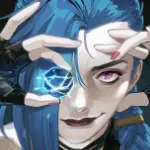Joker: Folie à Deux, directed by Todd Phillips and starring Joaquin Phoenix and Lady Gaga, presents a complex dive into identity, power, and the distortions between reality and entertainment. The title, “Folie à Deux” (meaning “madness shared by two”), encapsulates not only the relationship between Arthur Fleck (the Joker) and Harley Quinzel (Harley Quinn) but also the dual nature of the film’s narrative—balancing between a grounded reality and the spectacle of a musical. The film plays with the tension of what is real and what is performance, raising philosophical questions about power, societal rejection, and how we perceive truth.
An interesting layer is introduced in the second movie when it’s mentioned that a film was made about Arthur’s original crimes. This suggests that the events we saw in the first Joker may have been a fictionalized version of what really happened—an exaggerated portrayal of Arthur’s transformation into the Joker. The Arthur we see in Folie à Deux is much more human, fragile, and crushed under the weight of reality. This contrasts sharply with the mythologized, larger-than-life version of the Joker that we saw before.
What’s fascinating about Folie à Deux is its use of the musical format, which creates an interesting tension between beauty and horror. The musical numbers performed by Lady Gaga and Joaquin Phoenix are aesthetically pleasing, entertaining even, but beneath that surface, they reveal something much darker. Much like Arthur’s Joker in the first film, who found humor in his own chaos, the musical sequences in Folie à Deux allow us to momentarily enjoy the spectacle. But these performances are tied to a deeply unsettling reality—the story of a man who is mentally unraveling, trapped in a society that has rejected him.
This is where the brilliance of the film lies. It plays with our expectations as viewers. In musicals, we are conditioned to enjoy the songs, to find beauty in the performance. But here, these musical moments lull us into a sense of false security. While we admire the artistry, we are reminded that what we’re seeing is not merely entertainment—it is the story of a man whose life is falling apart. The songs act as a layer of illusion, much like the Joker’s persona, and once that illusion is stripped away, we are left with the harshness of reality. The musical format, while beautiful, becomes a vehicle for communicating the underlying chaos and tragedy of Arthur’s life.
This duality—the contrast between the entertainment of the musical and the grim reality it hides—parallels Arthur’s journey in the film. He believes in the power of the Joker persona, thinking it gives him control and purpose. But as Folie à Deux reveals, that power is illusory. His rebellion, much like the musical numbers, is a performance masking a more painful truth. This aligns with Michel Foucault’s theories of power, which suggest that power is everywhere, not just held by one figure or system. Arthur’s attempt to break free is futile because the societal forces he is up against are far too pervasive for him to overcome.
Harley Quinzel’s character also reflects this theme of illusion. She is infatuated with the idea of the Joker, not Arthur himself. Her exaggerated madness is a mask, much like the musical numbers, and both she and Arthur are ultimately disappointed when their constructed personas fail to withstand the weight of reality. As Harley becomes more entangled with Arthur, her artistic talents seem to grow, paralleling her descent into the chaos that Arthur himself is experiencing.
In conclusion, Joker: Folie à Deux masterfully combines themes of reality and performance, using the musical format to both entertain and unsettle. Todd Phillips plays with the audience’s expectations, drawing us in with beauty while simultaneously confronting us with the uncomfortable truths of Arthur’s life. The musical numbers, while visually and aurally stunning, serve as a reminder that even the most captivating performances can hide something far more tragic underneath. In this way, Folie à Deux forces us to reckon with the masks we wear, the illusions we believe in, and the harsh realities that eventually emerge when those masks fall away.













































View replies 0
View replies 0
View replies 0
View replies 0